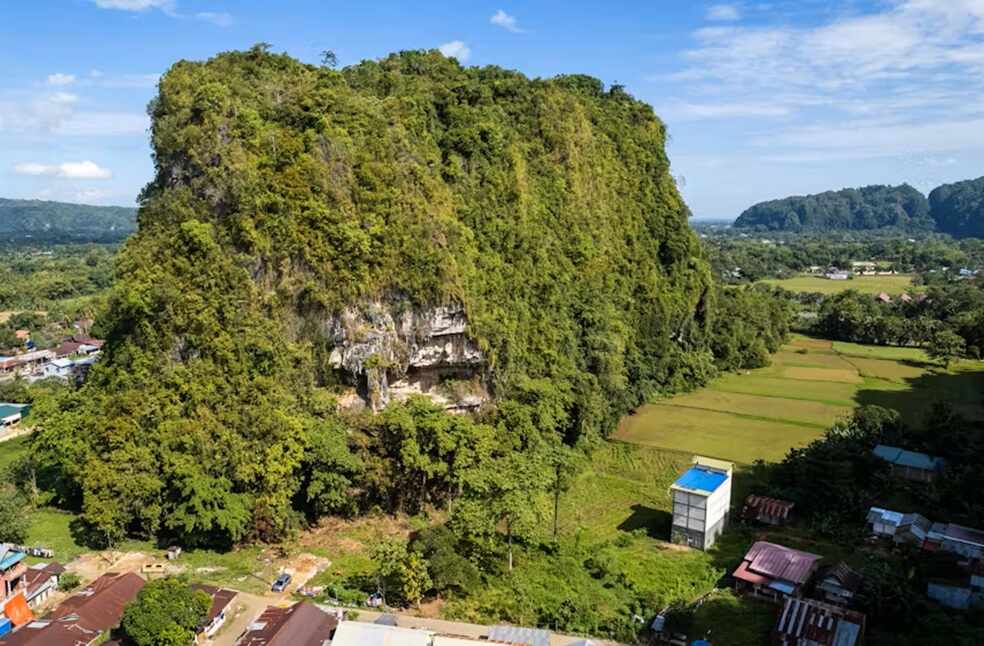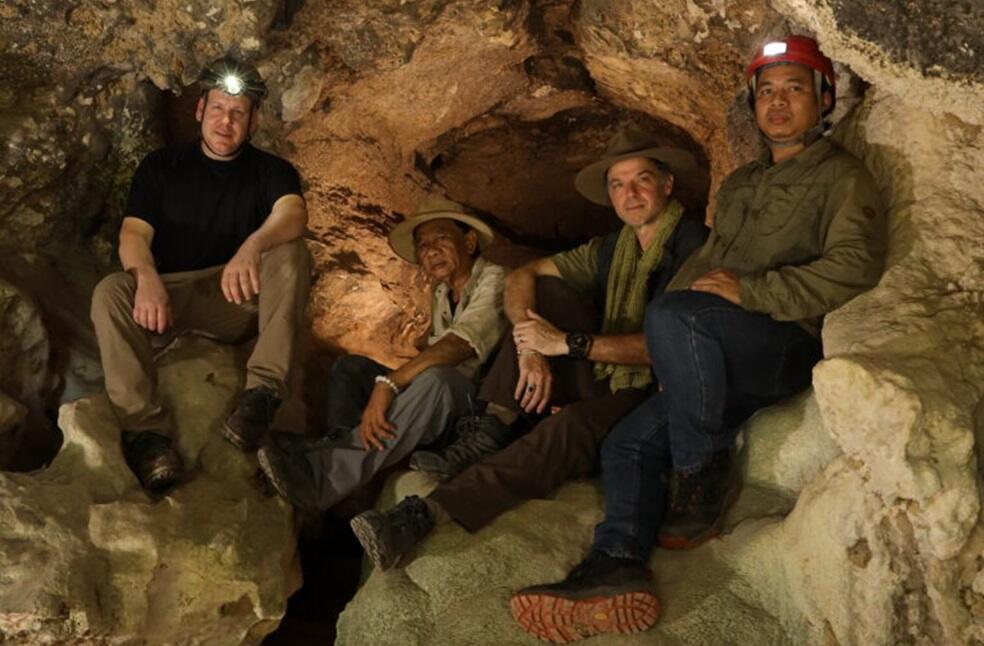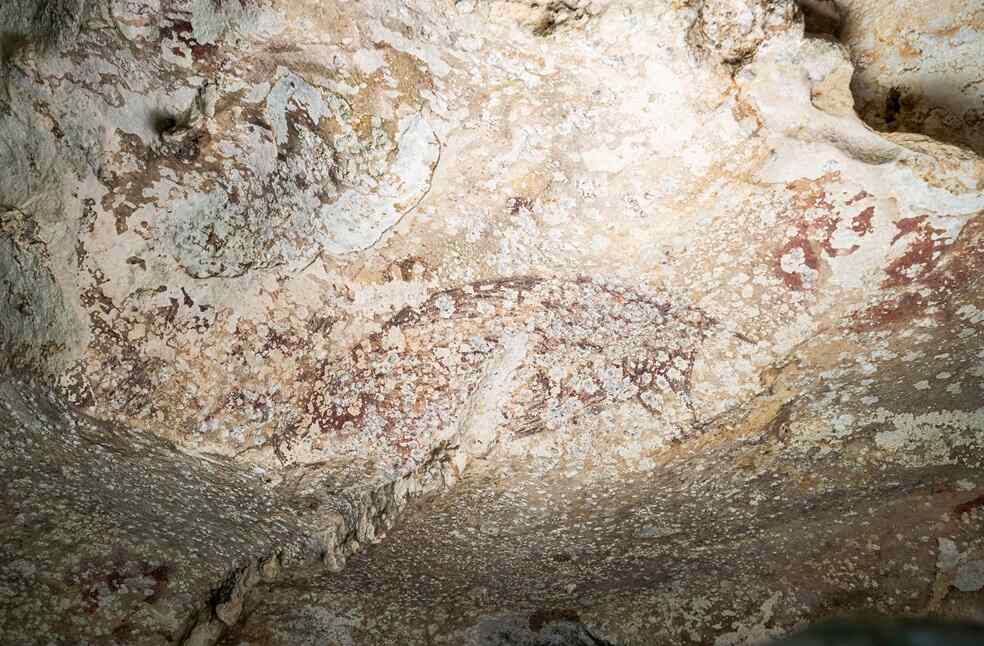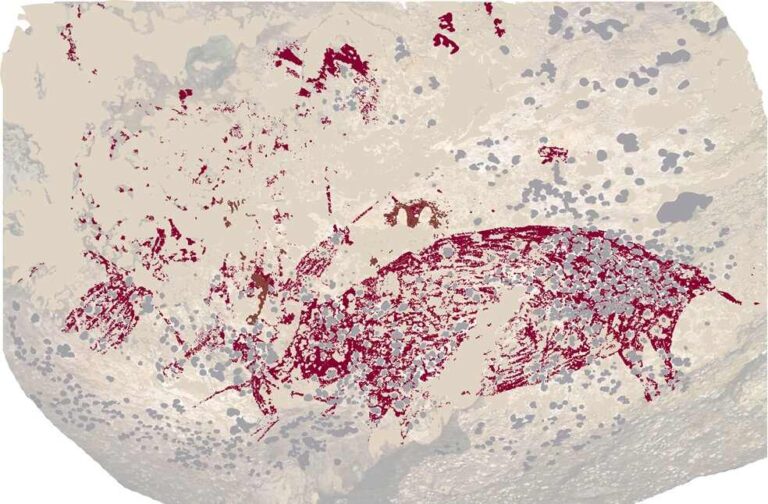Indonesia: Researchers have discovered the world’s oldest artwork in a cave on the Indonesian island of Sulawesi.
The painting, found in the Leang Karampuang cave in the Maros-Pangkep region, is estimated to be around 51,200 years old.
Maxime Aubert, an archaeologist at Australia’s Griffith University and co-author of the study published in Nature, described the finding as the ‘oldest evidence of storytelling.’

The newly discovered artwork features three people around a wild pig, measuring 92cm by 38cm (36 inches by 15 inches), rendered in a single shade of dark red pigment. There are other images of pigs in the cave.
Aubert speculated that the paintings were created by the first group of humans who migrated through Southeast Asia before reaching Australia about 65,000 years ago. Previously, the first narrative art was believed to have originated in Europe.

Chris Stringer, an anthropologist at London’s Natural History Museum noted that the Indonesian cave art’s dating is ‘quite provocative’ due to its significant age compared to European findings.
Stringer emphasised the need for further dating to confirm the findings but suggested that representational art may have first emerged in Africa, and the concept spread to other parts as humans migrated.
Researchers used a novel scientific approach to determine the minimum age of the Leang Karampuang cave painting, by using a laser to date calcium carbonate crystals that naturally formed on top of the painting. Little is known about the creators of the Sulawesi cave paintings.

Griffith University archaeologist Adam Brumm said that, “The discovery of ancient cave art in Indonesia challenges the long-held belief that Europe was the birthplace of such art. It also suggests that storytelling has a much older place in human history than previously recognised.”
“The earliest Sulawesi rock art is quite advanced and shows the mental capacity of people at the time,” remarked Aubert.



